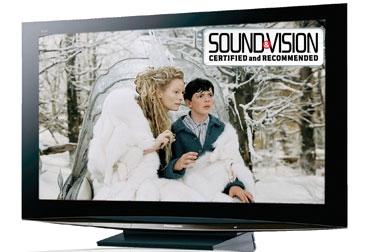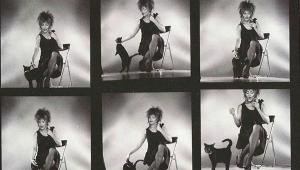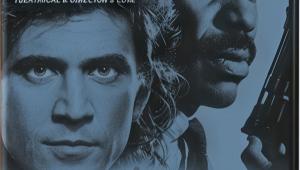Panasonic's next generation

The Short Form |
| $2,400 ($3,200 list) / PANASONIC.COM / 888-843-9788 |
Snapshot |
| Panasonic continues its long-running plasma winning streak with this THX-certified model |
Plus |
| • THX mode delivers near-reference-quality picture • Great shadow depth and detail • Reasonable price compared to competition |
Minus |
| • Standard-def pictures look slightly soft • Some flickering in 24p/48-Hz mode /td> |
Key Features |
| • THX certified • HDMI 1.3 inputs with Deep Color and x.v.Color • 24p Direct In mode with 2:2 pulldown option • Inputs: 4 HDMI; 2 component-, 2composite-, and 2 S-video; RGB PC; RF Ant/Cable; SD card • 50 x 33 1/2 x 15 1/4 in / 99 lb (with stand) |
The plasma TVs in Pioneer's Kuro line get the lion's share of press buzz for their picture quality, but Panasonic is the name that I'll usually throw out when someone asks me for buying advice on a plasma set. Why? Because Panasonic models offer strong performance at a fraction of a Kuro's price. Also, each new generation of Panasonic plasmas I've reviewed has tended to be better than the last - the company's new TH-50PZ800U, for example.
The feature set of this 50-incher is similar to that of the last Panasonic TV I reviewed, the TH-50PZ700U. Along with a 1080p-rez display and a built-in HDTV tuner, it has Viera Link to control other components connected via HDMI, and a screen filter to reduce the effects of ambient room light on the picture. Features making their debut on this model are HDMI 1.3 connections with Deep Color and x.v.Color support and - drum roll, please - a THX picture-preset mode (more on that in a bit).
At first glance, the TH-50PZ800U looks a lot like last year's model. But when you get down to the details of comparing the two, there are several differences. Instead of having a screen surrounded by a thick plastic bezel, the new TV presents an all-glass face. A mouth-like protrusion at the screen's bottom contains the speakers, along with a flip-up panel hiding control buttons and a full-featured convenience input with HDMI, composite-, and S-video jacks, plus an SD card slot for viewing slide shows of digital pix.
The back panel features a generous array of inputs: three HDMI 1.3 and dual component-video connections, along with an RGB port for a PC. The remote control is similar to the ones Panasonic has issued with its sets for several years now. It's chunky enough that you won't mistake it for another device's remote, and although it lacks a backlit keypad, the buttons are large and clearly labeled. Switching inputs on the TV involves hitting the TV/Video button and scrolling through an onscreen list of options. Pressing the Format button lets you cycle through the aspect-ratio modes. For standard-def signals, there are the usual choices, including Full (16:9), 4:3, and Stretch and Zoom. Each option can also be selected for high-def programs.
SETUP
The THX picture preset is a fantastic new feature that makes it easy to set up the Panasonic TV. You simply select this mode, and the picture settings are instantly optimized for movie watching. Other TVs offer similar presets, usually with names like Movie, Cinema, or Pro. But the Panasonic's THX mode really delivers the goods, with natural-looking color, strong contrast, accurate gamma, and no edge enhancement. As with the TV's four other presets, each of the THX mode's picture settings can be adjusted. Its Custom preset can also be tweaked separately for each input, with the TV recalling your settings as you switch between sources.
Compared with some other TVs, the Panasonic has somewhat limited picture adjustments. There are three color-temperature presets (but no user-adjustable controls for grayscale), a Black Level setting with dark or light options, and an x.v.Color setting, although this remains of little value until x.v.Color-encoded sources become widely available. Another new feature is the set's 24p Direct In mode, which lets you switch from standard 60 Hz to a 48-Hz display rate when receiving a 1080p/24 signal via HDMI from a Blu-ray Disc player. The key benefit here is the elimination of the 2:3 pulldown used to reconcile film's 24-frame-per-second rate with a TV's standard 60-Hz display.













































